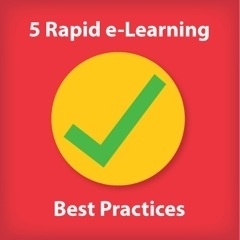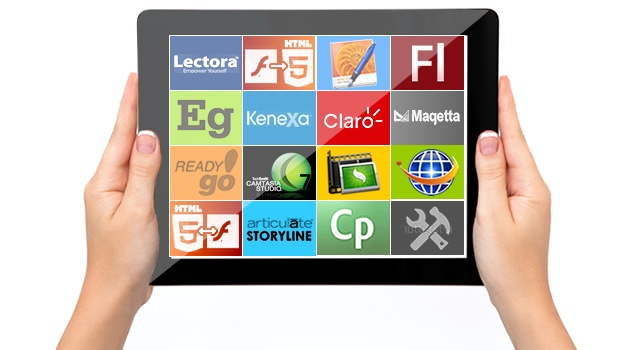First, what is rapid e-Learning? It generally features:
- Short development time
- Simultaneous instructional design and implementation
- Pre-made graphics and simulations
- Small file sizes for quick download times
- Shorter courses
What types of content work best as rapid e-Learning?
- Rapidly changing content
- Projects with short-term relevancy
- Small budget projects
- Just-in-time learning
- Hot topics
How do you start developing rapid e-Learning?
- Find your subject matter expert
Your subject matter expert (SME) is the person who knows the material best and has the most experience presenting it. This person is also probably the most knowledgeable about who the target audience is and what this audience wants from an online training course. Your SME can give you all the information you need to include in your course—so be nice to him or her! Here are some tips on working with subject matter experts. - If your budget allows, enlist the aid of an instructional designer
An instructional designer can teach you how to present the SME’s information for maximum effectiveness. You need instructional design to make sure your learners are engaged and retain your information. Using instructional design to ensure your course is aimed at a measurable outcome—application of skills learned to job performance—is good for your learners and you. Taking advantage of these types of resources helps improve the ROI for courses under construction. - Now it’s time to get storyboarding
Storyboards are a great way to organize your graphics and text and plan out the flow of your e-Learning. Storyboards are a valuable but often underestimated technique for creating e-Learning courses efficiently. You can check out these blog posts for more information on creating storyboards: Storyboarding Online Training Courses with Your Team and how to Turn PowerPoint Storyboards into Rapid e-Learning Masterpieces. - Use eLearning templates and other pre-made graphicsPre-made templates, characters, backgrounds and icons can help you jazz up your e-Learning fast. Templates are excellent time-savers because you can create one and reuse it again and again, especially if you create a standard template for your team to use to create multiple online training courses. Themes are another timesaving tool. For example, Lectora offers over 75 predefined design elements that come in different colors and sizes. Themes can give your course a professional look and feel. They’re also a great way to be efficient; not only will themes save time, but they’ll also provide inspiration as you’re designing your course.
- Create interactivity
Rapid e-Learning is more than just a jazzed up PowerPoint file. It should also be interactive and dynamic. One way to create interactivity is by including scenarios in your e-Learning content. Using actions and variables, you can create any level of scenario—from basic to complex. You could also embed videos or webpages into your content.
Keep these tips in mind as you create your next rapid e-Learning course. One affordable and easy-to-use rapid e-Learning tool is Snap! by Lectora. This PowerPoint plugin will help you create rapid e-Learning courses in no time! Happy e-Learning!
Originally published on December 19, 2013









